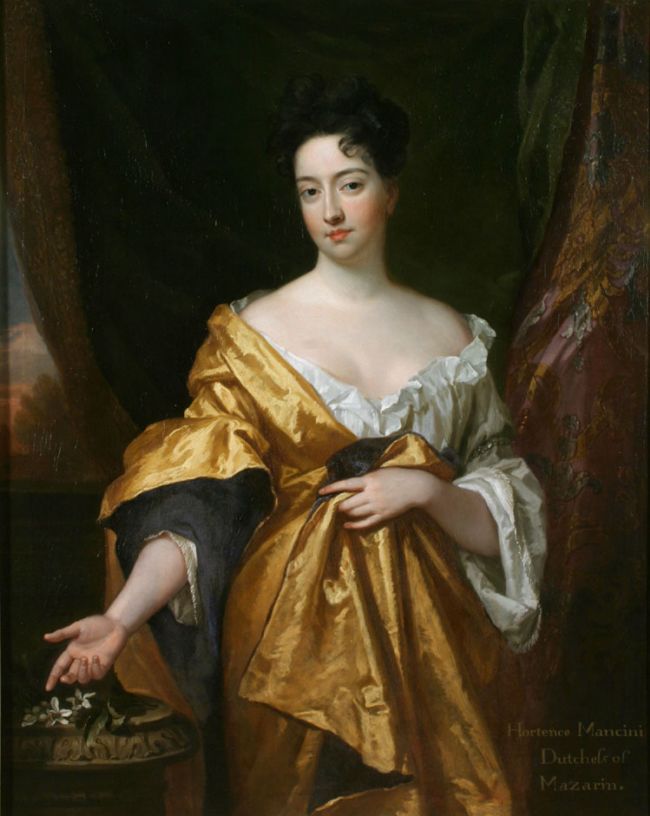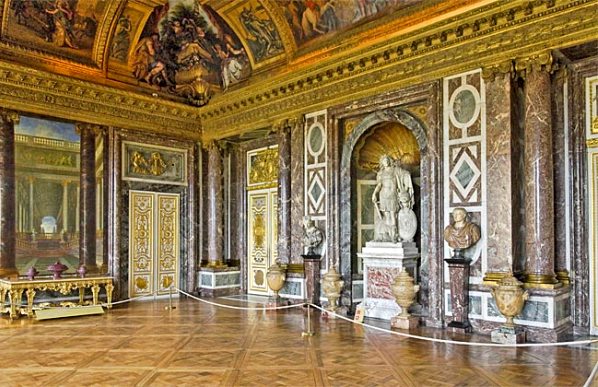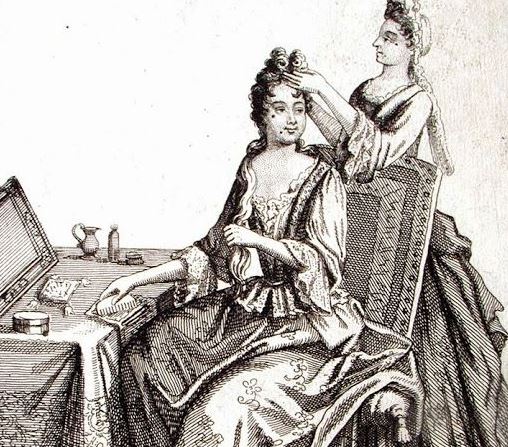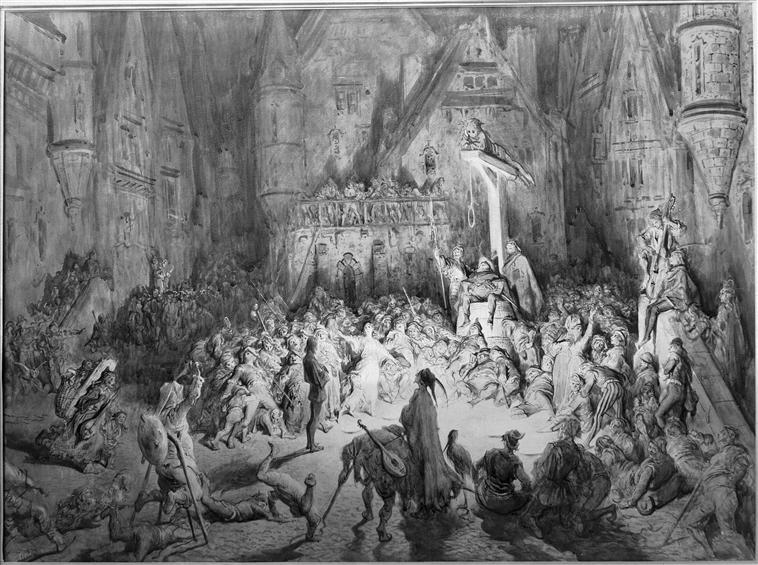The Chevalier de Rohan and The Latréaumont Conspiracy
Louis de Rohan was born in 1635 to Louis VIII de Rohan, Duc de Montbazon, and Anne de Rohan, Princesse de Guéméné, into the ambitious House of Rohan. A House that claims ancestry from the King’s of Brittany. A Vicomte de Porhoët was the first to take the name of Rohan, after the place he was born, and through the Vicomtes the family was related to the Ducs de Bretagne. The Rohans rose in rank from Vicomte to Duc and even to Prince, by claiming the title of Prince Étranger in France, something that needed the permission of the King.
It was a prominent family with many well-known and important members. Louis de Rohan being one of the more famous, but for different reasons.
 At the age of twenty, Louis was the Grand Veneur de France, Grand Huntsman of France, a position of great importance. Louis XIV loved to hunt and the Chevalier de Rohan was responsible for everything concerning it, from hounds to squires, but even more important, it enabled him to be close to the King and being close to the King, is the best that can happen to a nobleman.
At the age of twenty, Louis was the Grand Veneur de France, Grand Huntsman of France, a position of great importance. Louis XIV loved to hunt and the Chevalier de Rohan was responsible for everything concerning it, from hounds to squires, but even more important, it enabled him to be close to the King and being close to the King, is the best that can happen to a nobleman.
The Chevalier acquired another office of great importance and prestige, that of colonel of the guards of Louis XIV. Rohan did not have a chance to enjoy his new position for too long, he got himself involved in a scandalous affair. The start of his downfall. As friend of the Duc de Nevers, Rohan helped the Duc’s sister, Hortense Mancini, escape France and a brutal husband. The King was not pleased.
Since Rohan is quite the mysterious figure, rumours started to spread what the cause of the King’s displeasure with him was. One hinted an affair with Marie Mancini, the King’s first love, an other said Rohan flirted a little too much with Madame de Montespan, the King’s current love, while also having an affair with the sister of Madame de Montespan, and according to one rumour, Rohan debauched the King’s brother.
The Chevalier de Rohan had to resign from all his offices and due to it lost most of his income. Riddled with debt, and probably a bit pissed off, Rohan teamed up with a man named Gilles du Hamel de Latréaumont, nicknamed La Truaumont.
Since a lot of Versailles fans seem to read my blog, a spoiler warning might be appropriate here. The story of the Chevalier de Rohan is a part of history and as such found in books and articles, yet he is, compared to others, not someone utterly famous. Thus some who do watch Canal +’s Versailles might have never heard of him before. The show’s Rohan is based on this Rohan and everything beneath this will contain season one and possibly season two spoilers.
Latréaumont was involved in a plot towards the end of the Franco-Spanish War, that intended to raise a part of the Normandy and put it under control of the Comte d’Harcourt. The Comte, however, was most loyal to the crown. It was not the first time Latréaumont tried this, he offered the same to the Maréchal d’Hocquincourt in 1657.
Latréaumont went to exile and settled for a while in Amsterdam, where he met Affinius van den Enden. This man was a philosopher and atheist. Latréaumont became his student along with the exiled Comte de Guiche. In 1671 all three of them returned to Paris, where Affinius van den Enden founded a Latin School that also served as boarding house. One year later, in 1672, Louis XIV declared war on Spain.

Latréaumont came up with another plot by then and found some noble supporters of his cause. The Chevalier Guillaume des Préaulx, the Marquise Louise de Villars, and the Chevalier de Rohan. The latter by then even more in debt and still without the good graces of the King. Apart from his noble supporters in Paris, Latréaumont managed to interest some of the smaller nobles of the Normandy in his plan. To hide the fact that his number of supporters was rather small and make it appear larger, he even claimed some prominent nobles support him. Among them the Cardinal de Retz and the Duc de Bouillon, as well as the Comte de Matignon and the Marquis de Beuvron. None of them had an idea what was going on.
Latréaumont used a planned reform to lure people to the dark side. Nobles that wished to sell wood, were forced to pay two taxes instead of only one. His master plan took on form during the cause of the year and the Dutch and Spanish showed quite some interest in it.
What was his master plan? It was intended to kidnap the Dauphin, while he was hunting in the Normandy and his father busy with war, to hold the Dauphin hostage and to turn the Normandy into a republic and, last but not least, to murder the King and have the Dauphin, still as hostage, replace him. After all of that is done, it was planned to take Versailles and raid it.
The Chevalier de Rohan was in the very middle of all that and it was his involvement that was the end of their master plan.
Gaining the Spanish and Dutch support, including the means and weapons, to perform their plan, was not done in only a few days. Several secret meetings took place in the boarding house of van den Enden. As it happened, one of the residents was the Musketeer Jean Charles du Cauzé de Nazelle. He saw the Chevalier de Rohan enter the building several times and leave hours later. The Musketeer became curious, it was a house of little splendour at the outskirts of Paris, not a place someone would expect to see members of great noble families.
As Affinius van den Enden left Paris to travel to Brussels on August 31, in order to secure foreign support, the Musketeer informed Louvois of the odd happenings in the house and of all he had learned of their nature. Louvois did not hesitate. On September 11, Gabriel Nicolas de la Reynie, Lieutenant General of the Parisian Police, was sent to carry out a row of arrests.
The Chevalier de Rohan was arrested in Versailles. He had just heard mass, before the Major of the King’s Guards stopped and arrested him. Latréaumont was surprised in his rooms and in the attempt to have him arrested, badly wounded. He died shortly after. Van den Enden returned from his mission on September 17 and tried to flee, but in vain. The Chevalier de Préaux and Marquise de Villars did not manage to flee either, both were arrested.

All were brought to the Bastille. Letters about the plot did emerge in the meanwhile, thought to be written by Rohan, yet they had been anonymised in a way that made it difficult to link them directly to Rohan. The Chevalier was urged to make a confession, but refused. Rohan had friends outside the Bastille, which paraded the streets shouting “La Tuanderie is dead, and has said nothing.” in hopes it might reach the ears of Rohan, but did not. Day after day passed and Rohan kept his silence.
The commissioners decided to trick him into finally speaking, by declaring the King knew of everything and there were plenty of proofs, that the King was willed to issue a pardon, but for this, Rohan must confess. Somewhat credulous, the Chevalier told them everything, but it was not a pardon he received in return.
The Chevalier de Rohan was sentenced to death and along with him the Chevalier de Préaux, Marquise de Villars and van den Enden.
Affinius van den Enden found his end by hanging. The Chevalier de Préaux and Marquise de Villars were both beheaded on the ground of the Bastille on November 27, 1674. Louis de Rohan was beheaded on the same day, near the gates of the Bastille facing the Rue Saint-Antoine, and only a few meters away from the Hôtel de Rohan-Guémené, his family home.
Rohan’s property was confiscated and given to Marie d’Avaugour, the second wife of his grandfather, Hercule de Rohan. All writings of the conspirators, including a constitution for their planned Republic of Normandy, were burnt on December 7, 1674, in a large bonfire by the Bastille.




7 Comments
Angela Cox
Fascinating ,thank-you.
Simon
Nice spoiler alert. Unusual in something like this. I kept reading though as the known facts don’t spoil a well told story! Thanks for this. ?
Selma McGoram
Hello Aurora, Greta article, as always. I love reading the real history and stories of our Versailles Family members. Thank you for sharing. ⚜️?⚜️
Jacqueline Davis
A good friend of mine has the Birth name (Maiden name) of Rohan, and a poster of Palais de Rohan (?)
I am trying to keep her up to date with the BBC Series, but I am going to pass along this site.
She had thought it was simply a “Family Fable”!
To think he was beheaded!
Do we know much of his progeny?
Aurora von Goeth
I don’t think he had children himself, but the Rohan’s were a very large family with several branches. She might be able to trace it back and I she wants she can get into contact with me and I have a look. 🙂
Dawn Martinez-Byrne
Pity they burned the letters and such. What a fascinating read they would be, though one can hardly blame Louis for being furious over the plot.
Amy L.
Wonderfully written! Although I am in the midst of watching the mini-series your post, in no way, spoiled it (and I echo the thanks of the spoiler alert) in fact it has enhanced my enjoyment of the show. I am glad I stumbled upon your site and look forward to reading further and archived posts!